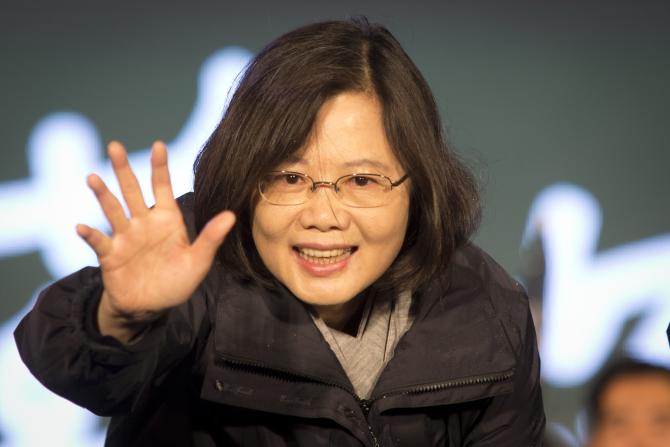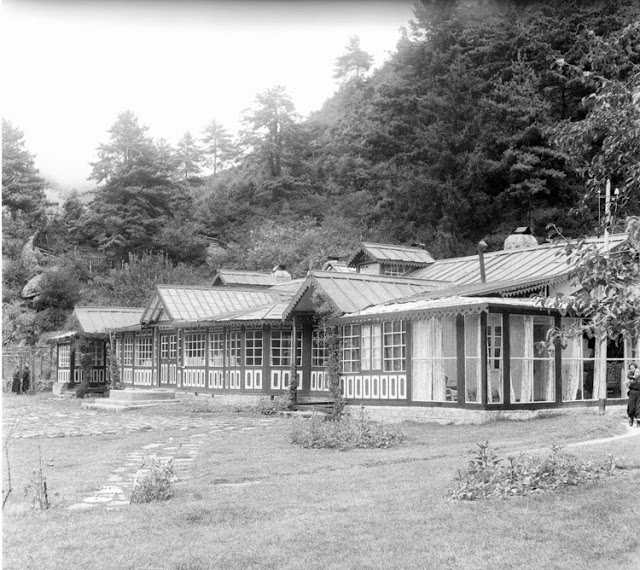IDR Blog
Countering China: New Taiwanese government and India can be effective partners
After the Chinese civil war and Jiang Jieshi’s flight to Taiwan, this tiny island nation located to the East of China was under one-party rule till 1996. In 1996, Taiwan formally became a democracy and elected its first President. Taiwan has two major parties, Kuomintang (KMT) and Democratic Progressive Party (DPP). The stance of the two parties towards Mainland China is radically different — the KMT claims that there is only one China, but the DPP claims that Taiwan is an independent country.
What complicates Taiwanese politics and bilateral diplomatic relations with China is the latter’s claim on Taiwan. This has resulted in Taiwan being derecognized as a country by major powers, which had initially recognized the Republic of China (Taiwan) instead of the People’s Republic of China (PRC). In 2000 before DPP first came to power, the PRC had openly threatened Taiwan and in 2008 when KMT again came to power much progress was made in bilateral relations between PRC and Taiwan. Almost 800-900 flights are flying across the Taiwan Strait every month highlighting healthy cross strait relations. Many believe that if this continues Taiwan will have peace. Tourists from Mainland China stand at 5 million, which KMT claims is good for the economy as well as bilateral relations.
However, even before the 2016 elections, the KMT was down in its popularity, as opposed to the DPP whose Presidential candidate who was high on popularity. During her election campaign this year, Tsai Ing-wen did not openly say that there is no 1992 consensus but left it ambiguous. There were reports through informal channels that the DPP tried to communicate to China that they could not use the same words due to their political ideology as China was putting pressure on DPP to clear its stance.
She leant towards a more centrist policy, while the KMT’s previous candidate Hung Hsiu-chu was more towards the rightist policy. Following a series of poor ratings in opinion polls, the party’s chairman, Eric Chu, replaced her. Even this replacement could not bring up the ratings as the DPP had put independence on the backburner, but focused on the poor state of the economy, which is standing at less than 2 per cent as far as GDP is concerned. However, it has promised to maintain the status quo between PRC and Taiwan.
Riding high on popularity and rising Taiwanese identity, the DPP won 68 out of the 113 seats in the Legislative Yuan, leaving 35 for the KMT, 5 for the New Power Party, and 3 for the People First Party. There are many challenges in front of the DPP when it assumes power after four months; the first being thorny relations with China, second, the rather awkward silence of the U.S after and even before the Taiwan elections as the U.S. was worried about DPP coming to power fearing confrontation between Taiwan and China.
After the DPP wins Chinese have used social media to show anger on her win and saying that “use force to unify Taiwan”. Even after the announcement of U.S. pivot to Asia sought to deter Chinese aggression but Taiwan was ignored. The reason is not clear but the U.S. has failed to include Taiwan in its reorientation to Asia and third being the dynamic nature of the political and societal basis of Taiwanese society. Many are marrying the mainlanders now, which have created a new class of people in China, called the ‘Mainland spouses’. They too have created a new party to protect their rights and they definitely have a direct line with China. This could be used as a bargaining chip with China in the future.
Analysts are looking at the possible implications and changes in Taiwan’s bilateral relations with PRC and the U.S. however, this article would map out the implications for India keeping DPP’s ‘New Southbound Policy’ and India’s ‘Act East Policy’.
Implications for India
During her election campaign, Tsai Ing-wen, very clearly mapped out her government’s foreign policy. She paid visits to Japan and the U.S. to discuss Taiwan’s future in the international arena. In her speech on DPP’s 29th anniversary celebrations on September 22nd 2015 at the Far Eastern Hotel in Taipei, she said, “another one of our international priorities is to build up our relations with our neighbors in Southeast Asia and the Indian subcontinent. I am pleased to announce that a future DPP administration will pursue a ‘New Southbound Policy’ in the years ahead”.
ASEAN and India are poised to become two of the world’s largest economic bodies. Strengthening overall relations with India is a natural choice for Taiwan especially as the Indian nation diversifies its economic and trade ties. The special emphasis that DPP has given to India is quite evident in the speech and the ‘New Southward policy’ which has become the mainstay of Taiwan’s foreign policy. This is not the first time the DPP has approached India to establish strong ties between the two countries. Taiwan had offered to establish military and strategic cooperation to counter China in the region, especially during the previous Democratic Progressive Party (DPP) rule, but India did not show much keenness.
However, economic and cultural ties between the two countries have made some progress over the years. Taiwan is increasingly becoming a destination for Indians, especially students. Most recently, there has been a surge in the number of Indians coming to Taiwan for research and academic pursuits, including under graduate, graduate, doctoral and post doctorate positions, as well as teaching in higher level institutions. Starting from 2005, a large number of Indian software engineers began being hired for short, medium or long term assignments with various IT clients around Taiwan. Taiwan’s bilateral trade with India has shown consistent growth since 2001 (US$ 1.123 billion), increasing about six-fold in nine years to reach US$ 6.47 billion in 2010.
In 2011, bilateral trade reached US$7.569 billion an increase of 17 percent over 2010 with India’s exports growing by 10 per cent to reach US$3.142 billion and imports by 22 percent to US$4.427 billion. Bilateral trade between India and Taiwan stood at $6 billion in 2014 and over 70 Taiwanese companies have invested in India since 2013. India Electronics and Semiconductor Association (IESA), an industry lobby, signed a memorandum of understanding (MoU) with Taiwan Electrical and Electronic Manufacturers’ Association (Teema) to promote cooperation and investment between Indian and Taiwanese companies in the electronic system design & manufacturing (ESDM) industry on March 22 2015.
The progress already made in India-Taiwan relations will grow, given the keenness of the DPP government for taking the ties even further. However, much would depend on India’s initiative to come forward this time. The advantages here are many. For one, this would further India’s ‘Act East Policy’ as India has already raised the bilateral relationship with South Korea to a ‘special strategic partnership’ level, with the provision of annual summit meets between respective leaders and annual 2-2 meetings between the foreign and defense ministers.
On strategic and security issues too, India has started ‘Act East’ with agreements signed with South Korea and also with the United States and Japan, especially multiple agreements with the U.S., including one that requires Indian support for freedom of navigation in the South China Sea, issues of maritime security, and interests in maintaining regional stability in the Asia-Pacific. Taiwan has control over of Itu Aba, the largest island in the Spratly chain, along with Pratas Island, which controls the South China Sea’s northeast exit. This makes Taiwan an important ally for not only furthering India’s interest in East Asia but also for controlling China’s might in East Asia. If India could add Taiwan in its strategic ambit along with South Korea, Japan and the U.S., it would benefit equally India and Taiwan as DPP is already approaching Japan and South Korea for strategic partnership.
Courtesy: http://southasiamonitor.org/detail.php?type=sl&nid=15425





